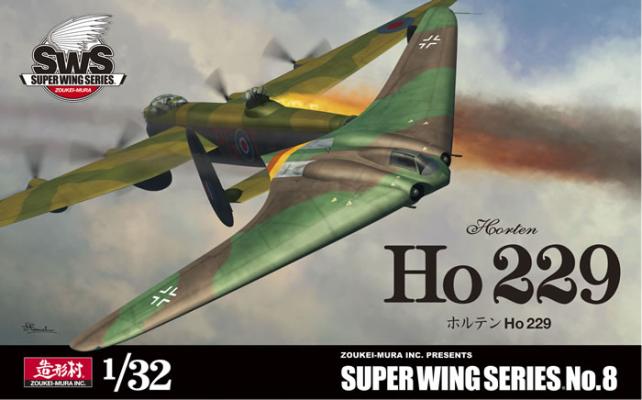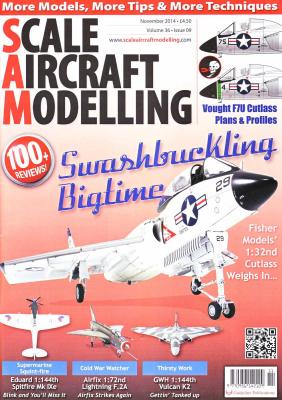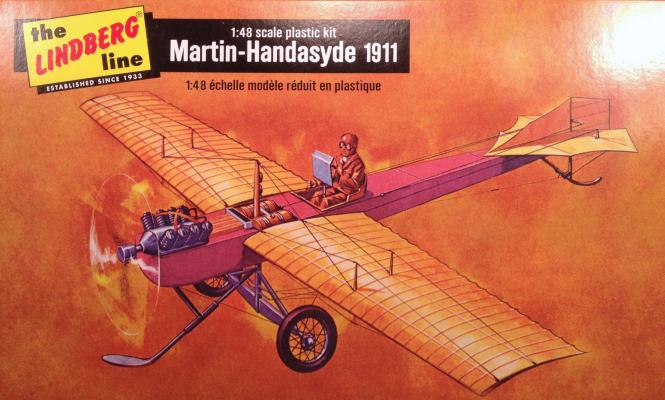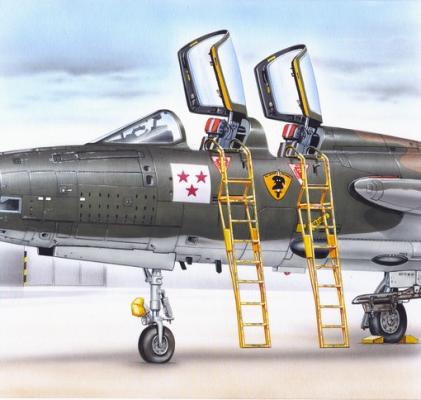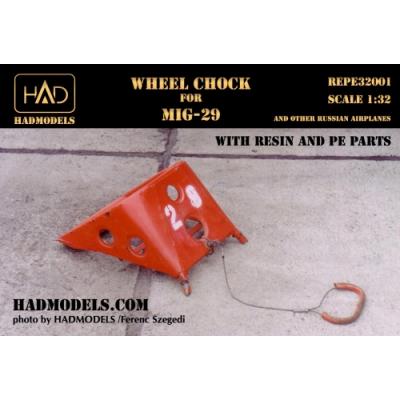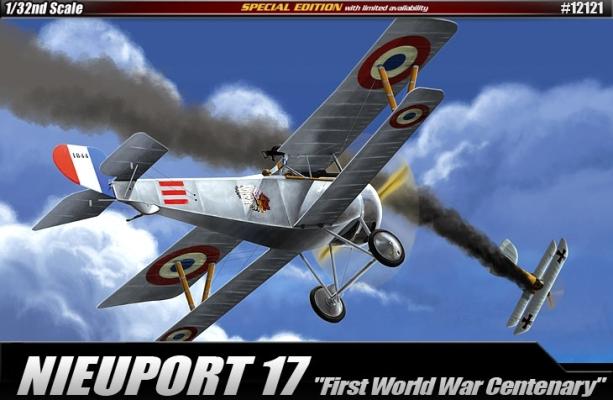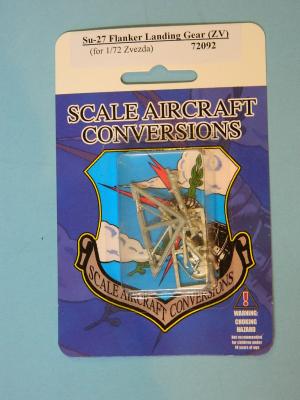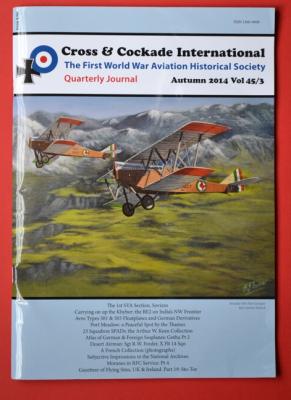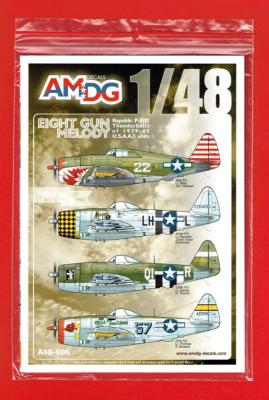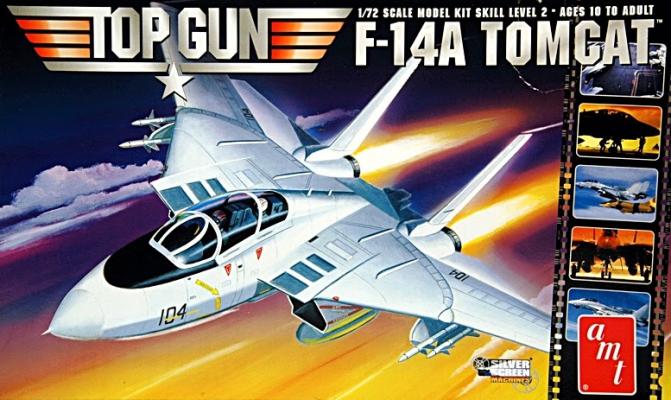Zoukei-Mura is relatively new on the model making front as far as time goes but they have set a new standard for modeling with their philosophy of having the internal detail be included in their planes. They have also chosen extremely desired and interesting subjects and the latest 1/32nd scale offering is a Horten Ho-229 jet- their first jet. The Ho-229 (sometimes called the Go-229) was an all wing aircraft propelled by two jet engines deep in the fuselage. It has somewhat the look of a B-2 Spirit. It was purposely designed to allow for minimal radar detection with 1000kg load of bombs, a 1000 kph top speed and a range of 1000 km. It might have been close to those numbers if mass produced.
Each issue of Scale Aircraft Modeling has the same basic design and format. That's not a bad thing as it is jam packed with superb aircraft builds and tips. There does seem to be a trend to add more feature articles and that is a very good thing as the builds are superb. In this issue, there are five feature articles, an Aviation in Profile piece, and six Compact Build Reviews.
The Feature articles for this issue start with Jay Laverty's build review of the Fisher Models 1/32nd F7U Cutlass. He details some upgrades to the wheel wells and how to handle such a large resin kit. A good description of his way to get a true white base coat sprayed is also a highlight of the article.
Next up is Mr. Laverty's continuing build of the new Airfix 1/24th Scale Typhoon. In this installment, the engine is built and wired and added to the already finished main spar/cockpit assembly. the conclusion is in Decembers issue and I can't wait to see it.
Background
H.P. Martin and George Handasyde were an aircraft and motorcycle manufacturer from 1908 to 1922. The subject of this kit was one of their first efforts and appears to represent the third version of this aircraft. I base that on the 40hp J.A.P. engine that is fitted to this kit. This aircraft strongly resembled the French Antoinette including the odd twin wheel controls in the earlier versions. Those were abandoned after criticism from early test flights. Controls were modified to a control wheel with fore and aft motion for the elevators and wing wrapping controlled by turning the wheel. A bar controlled the rudder.
What's a decent diorama builder to do if you want to pose your plane with a boarding ladder? Plusmodel to the rescue! They have recently released a series of 1/48th scale boarding ladders for several planes. This one if for a F-105F/G (the two seat version) and could be used with either the Hobbyboss or Revell kits and it is INJECTION MOLDED!!!!!
HAD Models from Hungary has its own line of resin and photoetch and this set is an example of how superb their parts can be. Set 132001 is a set of wheel chocks meant for Mig-29's, but would work with any 1/32nd scale Russian planes. The set consists of two resin parts for the majority of the chock and 6 photoetch pieces. Four make up the braces and two are the ends with the claw-like grabbers, which prevent the chock from moving.
Assembly is done by removing the casting block from the resin chock bodies. Next two of the braces are bent into channel shapes. A hold and fold is excellent for this. Lastly, the front part is bent so the grabbing fingers bend down. All three of these are glued in place on the bottom via their excellent instructions. Super glue is a must for adhesion since we are bonding photoetch and resin. Repeat for the other chock and prime (I used Alclad gray).
Recently Academy has jumped on the bandwagon of World War 1 related items by re-releasing a couple of their older 1/32nd scale aircraft. This one is the ubiquitous Nieuport 17. This new commemorative edition features new decals for three aircraft, a little string for rigging, and a small photoetch sheet for details.
Having built this model a number of times over the years, I still consider it one of the best offerings Academy has ever done of a WW1 aircraft. It captures the lines of this scrappy little fighter quite well. The only notable exception is the upper wing gun, which doesn’t to my eye come close to representing a Lewis gun, or any other aircraft gun of the period, for that matter.
Thanks to SAC for developing a metal gear set for this new kit; and thanks to the IPMS leadership for sending it on!
These SAC reviews may be the proverbial broken record; stronger, metal version of the kit’s gear, “form/fit/function” replacement. Bottom line is the SAC gear improves on the strength of the long kit legs.
The latest journal of Cross & Cockade International is Autumn 2014. It is the third of four journals that make up Volume 45. C&C I is the quarterly publication of a non-profit UK based organization known as The First World War Aviation Historical Society. This organization has been publishing these journals since 1970 with the objective of furthering the study of First World War Aviation History. This journal continues the organization’s mission by providing a wealth of information on varied WWI aviation subjects…this time venturing into the realm of WWI Italian aviation before covering a substantial number of more typical Allied and Axis subjects. The cover of this journal features a painting by Ken Farmer of a pair of First Section AnsaldoSVAson patrol. It serves as a precursor to the lead six-page article about the missions flown by the Ansaldo First Section.
The second Republic P-47D Thunderbolt decal set recently released by A.M.D.G. Decals is #A48-006. It provides markings for one Razorback and three Bubbletop P-47Ds from four different fighter groups flying in the European theater. If a Thunderbolt is not already on your bucket list, this set may force you to reconsider the omission. As a matter of fact, it may motivate you to pencil in more than one P-47 project because all four schemes are very tempting candidates, and this set provides everything needed to complete each of the tempting subjects.
The F-14A fighter was designed because of the failure of the F-111B and the lack of its fighter capabilities, weight, and rear visibility. It was a fourth generation, supersonic, two seat, twin engine, variable- sweep wing aircraft. It was designed using the lessons learned about fighting Migs during the Vietnam War. They took the TF30 engines, AWG-9 radar and the AIM-54 missile system from the F-111B and designed a more capable fighter aircraft. It first flew in 1970 aboard the USS Enterprise.
This kit is put out by Round 2 which is re-releasing older kits from Polar Lights, MPC and, AMT. It makes me really happy to know that I’ll be able to find some of the older kits from my childhood at more reasonable prices than the originals that are found on Ebay. Thanks for all your efforts Round 2, they are appreciated. One thing to remember about these older kits is that the molds are older and there can be a lot of flash to scrape off of the parts.

